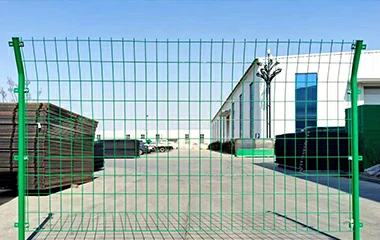 TEL:
+86-13102802206
TEL:
+86-13102802206
 Email:
fencenetting@china.com
Email:
fencenetting@china.com
 Language
Language
 TEL:
+86-13102802206
TEL:
+86-13102802206
 Email:
fencenetting@china.com
Email:
fencenetting@china.com
 Language
Language


Building a Gabion Wall A Comprehensive Guide
Gabion walls are increasingly popular in landscaping and civil engineering due to their unique aesthetics, environmental benefits, and structural functionality. Constructed from wire mesh cages filled with rocks or other materials, gabion walls can serve multiple purposes, including erosion control, noise reduction, and acting as retaining walls. This article offers a detailed guide on how to build your own gabion wall, ensuring effective construction and lasting durability.
Step 1 Planning and Design
Before starting any construction project, a well-thought-out plan is crucial. Begin by determining the purpose of your gabion wall. Are you looking to create a decorative feature, control erosion, or manage runoff? Understanding its purpose will inform your design choices.
Next, select the location where you want to build the wall. Assess the drainage and ground conditions, as a stable foundation will contribute to the longevity of the wall. Ensure the design meets any local regulations or zoning laws, and consider consulting professionals if necessary.
Step 2 Materials and Tools
To build a gabion wall, you will need specific materials and tools. The main components include
- Gabion Cages These are typically made from galvanized steel or stainless steel to resist rust and corrosion. You can purchase pre-made cages or create your own from wire mesh. - Filling Material The filling material can be natural stones, recycled concrete, or even decorative rocks to enhance visual appeal. Ensure that the stones are durable and suited for outdoor use. - Tools Basic tools required include a shovel, a tamper, gloves for protection, a level, and pliers for bending and securing wire.
Step 3 Preparing the Site
Once you have gathered your materials, start by clearing the area where the gabion wall will be built. Remove any grass, debris, or large stones to create a flat surface. If the wall is meant to hold back soil, it’s essential to create a trench that’s slightly wider than the gabion cages. The depth of the trench will depend on the height of the wall you plan to construct; typically, 6 to 12 inches is adequate.
After clearing the area, lay down a layer of gravel or crushed stone at the base of the trench for drainage. This will help prevent water accumulation, which can weaken the structure over time.

Step 4 Assembling the Gabion Cages
Once the trench is prepared, it’s time to assemble the gabion cages. If using pre-made cages, follow the manufacturer's instructions for assembly. When creating your own cages, use wire mesh to form rectangular boxes and secure the edges with wire clips.
Place the assembled cages into the trench. Make sure they are level and aligned properly. You may need to adjust the position slightly to ensure that all cages are even and stable.
Step 5 Filling the Gabion Cages
With the cages in place, begin filling them with your chosen material. Use larger stones for the outer layer and smaller stones for the interior. This not only improves stability but also creates a visually appealing surface. Fill each cage to the top, and as you fill, use a tamper to ensure that the stones are compacted tightly.
Once filled, close the top of the cages using the same wire mesh or panels. Secure it well to prevent the stones from spilling out.
Step 6 Finishing Touches
After filling the gabion cages, it’s time to add the finishing touches. You can plant vegetation around the base for added aesthetics and to promote drainage. Installing a drainage system behind the wall can also enhance its longevity by preventing water buildup.
Consider using topsoil or other landscaping materials to blend the wall into the surrounding terrain. This added care can help the gabion wall look like a natural part of your landscape.
Conclusion
Building a gabion wall can be a rewarding project that enhances both the beauty and functionality of your outdoor space. By following the above steps, you can ensure a successful construction that meets your needs. Whether for practical purposes or visual appeal, gabion walls are a versatile solution that can significantly contribute to your landscape design. With proper planning and execution, your gabion wall will stand the test of time, providing both structure and style to your property.